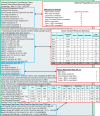Dataset of United States Incident Management Situation Reports from 2007 to 2021
- PMID: 38172173
- PMCID: PMC10764906
- DOI: 10.1038/s41597-023-02876-8
Dataset of United States Incident Management Situation Reports from 2007 to 2021
Abstract
This paper presents a unique 15-year dataset of Incident Management Situation Reports (IMSR), which document daily wildland fire situations across ten geographical regions in the United States. The IMSR dataset includes summaries for each reported day on national and regional wildfire activities, wildfire-specific activities, and committed fire suppression resources (i.e., personnel and equipment). This dataset is distinct from other wildfire data sources as it provides daily information on national fire suppression resource utilization, national and regional preparedness levels, and management priority for each region and fire. We developed an open-source Java program, IMSR-Tool, to process 3,124 IMSR reports available from 2007 to 2021 to generate this structured IMSR dataset, which can be updated when future reports become available. The dataset presented here and its future extension enable researchers and practitioners to study historical wildfire activity and resource use across regions and time, examine fire management perceptions, evaluate strategies for fire prioritization and fire resource allocation, and exploit other broader usage to improve wildfire management and response in the United States.
© 2024. The Author(s).
Conflict of interest statement
The authors declare no competing interests.
Figures









References
Publication types
LinkOut - more resources
Full Text Sources

